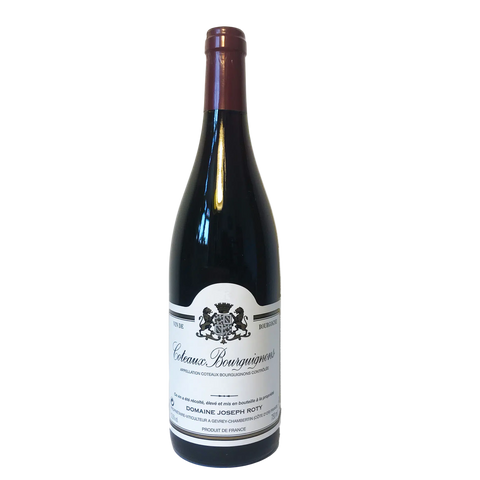
2022 Domaine Joseph Roty Coteaux Bourguignons Rouge, Burgundy, France
ABOUT THIS WINE
The Coteaux Bourguignons appellation was created in 2011, replacing the appellation Bourgogne Grand Ordinaire, the previous name of this wine. The appellation allows for Gamay in the blend, but the Rotys’ wine has always been 100% Pinot Noir. It is made from vines over three decades old, a parcel just below the Gevrey-Chambertin boundary, planted by Pierre-Jean’s father Joseph.
ABOUT THIS PRODUCER
Domaine Joseph Roty is a renowned family estate located in the heart of Gevrey-Chambertin, Burgundy. The estate has been producing wines since 1960 and is currently managed by brothers Pierre-Jean and Philippe Roty, representing the 11th generation of winemakers in the family. The Roty family has been passionate about winegrowing since the early 18th century.
The vineyards are situated in the Côte de Nuits region, known for its exceptional Pinot Noir. The estate practices traditional viticulture, with a focus on old vines, some dating back to 1881. The use of pesticides and herbicides is avoided, and the vines are grown on clay-limestone soils.
Details:
| Grape(s) | Pinot Noir |
